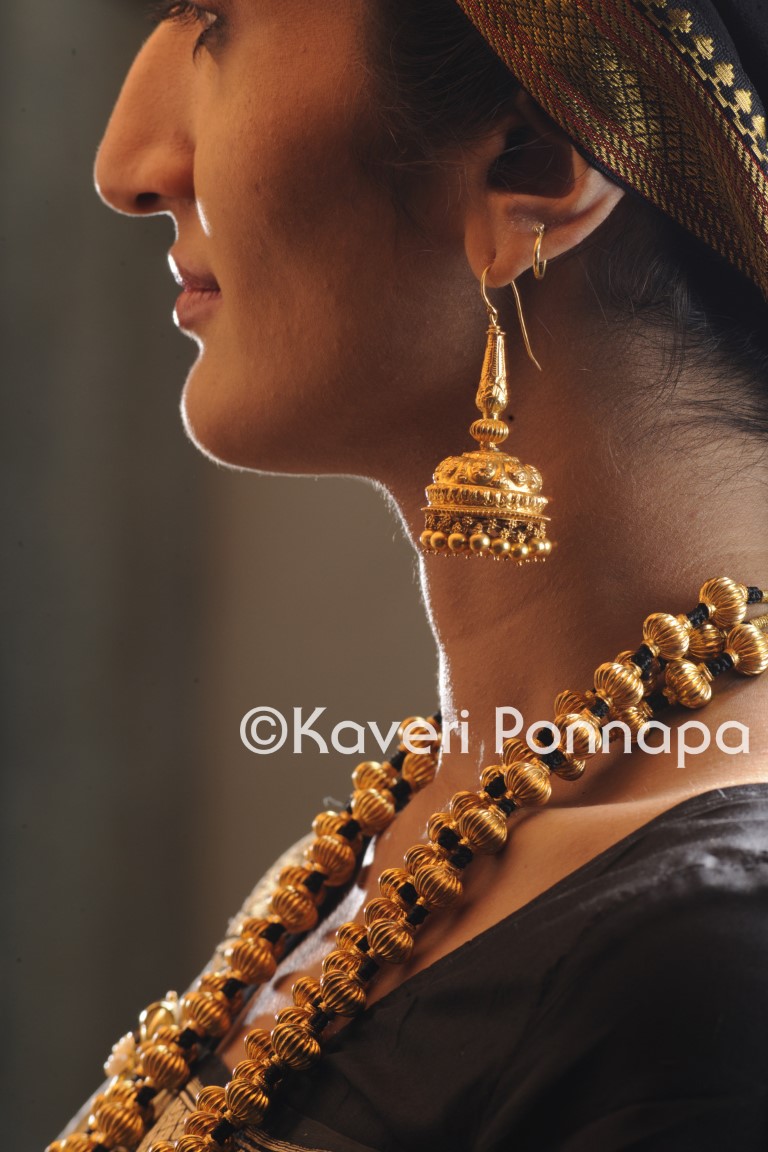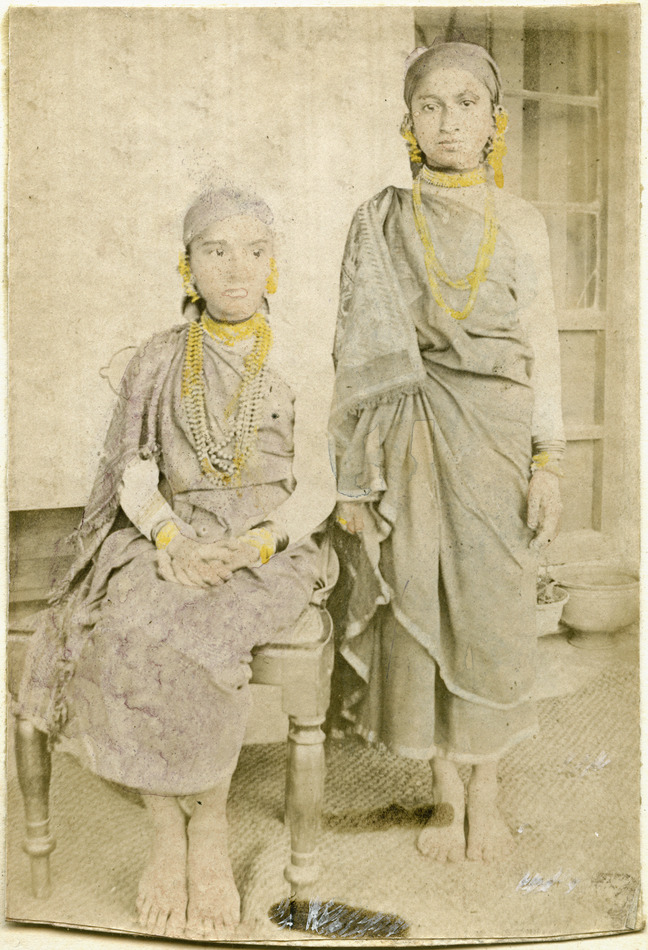
The Jomale or Jomaale, a double strand of grooved, lac-filled gold beads resembling the Indian gooseberry, strung on black cord, is an essential part of a Kodavathi bride’s jewellery. The size of the beads may vary, and the number of strands of beads are also dictated to an extent by personal choice. It is common to see single stand or three-strand jomales. The beads reflect the common practice in Indian jewellery traditions that makes use of organic forms inspired by Nature. The black cord is considered auspicious, imbued with the power to ward off the evil eye. The strands of black cord are drawn together in a beautiful decorative gold tassle of repoussé work, kuchi, which is sometimes worn over the shoulder to display the beauty of the craftsmanship. A 19th Century portrait of Rani Mahadevamma, depicts one of the wives of Chikka Veera Rajendra, sketched by Alexis Soltykoff at Benaras wearing a spiked gold necklace around her neck and strands of what looks remarkably like jomale. The tradition of crafting the jomale continues to exist in North Karnataka.
Below is a 19th Century image of Coorg(Kodava) women wearing jomale.

Reference: BMA QL-30.012.0056 Title: “Kurgmädchen. ” Creator: [leer] N Date: 01.01.1850-31.12.1897

